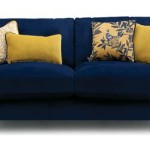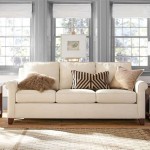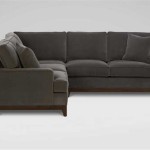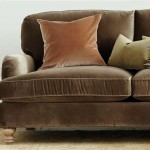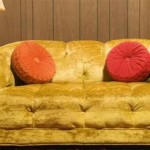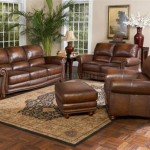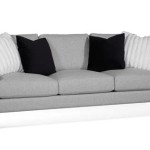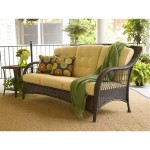Most Comfortable Sofa Recliners: A Comprehensive Guide
The pursuit of ultimate relaxation often leads individuals to consider the integration of comfort and functionality within their living spaces. Sofa recliners, which combine the seating capacity of a sofa with the individual reclining capabilities of a recliner, represent a popular choice for those seeking both. This article provides a comprehensive overview of factors contributing to the comfort of sofa recliners, exploring aspects of design, materials, and features that influence the overall user experience.
Selecting a comfortable sofa recliner extends beyond aesthetic preferences. It necessitates a careful assessment of structural components, upholstery choices, and available reclining mechanisms. The ideal sofa recliner adapts to individual body shapes and preferences, providing consistent support and promoting relaxation over extended periods. A well-chosen recliner can significantly enhance the comfort and usability of a living room or home theater.
Key Point 1: Framework and Construction
The foundation of any comfortable sofa recliner lies in its framework and construction. The materials used in the frame directly impact the recliner's durability, stability, and long-term support. Hardwood frames, such as oak or maple, are widely recognized for their strength and resistance to warping. These hardwoods provide a solid base that can withstand the repeated stresses associated with reclining mechanisms. Conversely, frames constructed from softer woods or particleboard may be more susceptible to damage and premature wear.
Beyond the type of wood, the joinery techniques employed during construction are equally critical. Reinforced joints, such as mortise and tenon or corner-blocked connections, contribute to the structural integrity of the frame. These techniques distribute weight evenly and prevent joints from loosening over time. Staples or screws that are not properly countersunk or that are sparsely spaced may compromise the frame's overall stability.
The reclining mechanism itself must be robust and smoothly operating. Mechanisms made from heavy-gauge steel are generally more durable than those made from lighter materials. Consider the ease of operation and the range of reclining positions offered by the mechanism. Some mechanisms offer infinite positions, allowing for precise adjustments, while others provide a limited number of pre-set options. The linkage attaching the seat and back to the mechanism should also be examined for its robustness and smooth articulation.
Suspension systems play a vital role in the comfort of a sofa recliner. Sinuous springs, also known as no-sag springs, are commonly used in sofa construction. These springs provide firm support and prevent the seat from sagging. Look for springs that are closely spaced and attached to the frame with durable clips to maximize their effectiveness. Hand-tied coil springs, while more expensive, offer superior support and are often found in high-end recliners. These springs conform to the body's contours and distribute weight evenly, promoting optimal comfort. Webbing systems, made from elastic or non-elastic materials, provide an alternative suspension option. The quality and construction of the webbing determine its ability to provide adequate support and prevent sagging.
Key Point 2: Upholstery and Cushioning Materials
The upholstery and cushioning materials significantly contribute to the tactile comfort and overall aesthetic appeal of a sofa recliner. The choice of upholstery fabric influences factors such as breathability, durability, and ease of maintenance. Leather, renowned for its luxurious feel and longevity, represents a popular upholstery option. Different grades of leather offer varying levels of softness and resistance to wear. Top-grain leather, considered the highest quality, retains the natural grain patterns and develops a rich patina over time. Bonded leather, made from recycled leather fibers, provides a more affordable alternative, but it may not possess the same durability and tactile qualities as top-grain leather.
Fabric upholstery offers a wide range of textures, colors, and patterns. Microfiber fabrics, known for their softness and stain resistance, are a practical choice for households with children or pets. Cotton fabrics, while comfortable, may be more prone to staining and fading. Synthetic fabrics, such as polyester or acrylic, offer enhanced durability and resistance to moisture. Consider the thread count and weave of the fabric, as these factors influence its overall quality and resilience.
The cushioning materials within the sofa recliner determine its level of support and comfort. High-density foam provides firm support and resists compression over time. Look for foam with a density rating of at least 1.8 pounds per cubic foot for optimal performance. Memory foam cushions conform to the body's contours and relieve pressure points, enhancing comfort during extended periods of sitting. However, memory foam may retain heat and may not be suitable for individuals who prefer a cooler seating surface.
Down cushions offer a luxurious, plush feel, but they require regular fluffing to maintain their shape. Down-feather blends provide a balance between softness and support. Fiberfill cushions, made from synthetic fibers, offer a more affordable alternative to down. The construction of the cushions, including the batting and ticking, also influences their overall comfort and longevity. Look for cushions that are well-padded and evenly filled to prevent sagging and uneven wear.
Key Point 3: Ergonomic Design and Features
Ergonomic design principles are essential for maximizing the comfort and minimizing the risk of discomfort associated with prolonged sitting in a sofa recliner. Proper lumbar support helps maintain the natural curvature of the spine and prevents lower back pain. Look for recliners with built-in lumbar supports or adjustable lumbar pillows. The height and shape of the backrest should also provide adequate support for the upper back and shoulders.
The depth and angle of the seat influence the distribution of weight and the positioning of the legs. A seat that is too deep may cause slouching, while a seat that is too shallow may not provide adequate support for the thighs. The angle of the seat should promote a natural, relaxed posture. Consider the armrest height and width, as these factors affect the comfort of the arms and shoulders. Wide, padded armrests provide a comfortable resting place for the arms and help prevent shoulder strain.
Additional features, such as power reclining mechanisms, adjustable headrests, and built-in massagers, can further enhance the comfort of a sofa recliner. Power reclining mechanisms allow for effortless adjustments to the reclining position, eliminating the need for manual levers or handles. Adjustable headrests provide customized support for the head and neck, reducing strain and promoting relaxation. Built-in massagers can help relieve muscle tension and improve circulation. Heat features can provide soothing warmth during colder months.
The overall dimensions of the sofa recliner should be appropriate for the user's height and body type. Taller individuals may require recliners with longer seat depths and higher backrests. Individuals with limited mobility may benefit from recliners with power lift mechanisms, which assist in standing up and sitting down. Consider the placement of the recliner within the room and ensure that there is sufficient space for the recliner to fully recline without obstructing walkways or furniture. Integrated storage compartments, cup holders, and USB charging ports can add convenience and functionality to the sofa recliner.
The selection of a sofa recliner is a highly personal decision, dependent on individual preferences and requirements. By carefully considering the framework, upholstery, cushioning, ergonomic design, and available features, individuals can identify a sofa recliner that provides exceptional comfort and enhances their overall well-being. The investment in a high-quality, well-designed sofa recliner represents a commitment to long-term comfort and relaxation.

10 Best Reclining Sofas Of 2024

The World S Most Comfortable Sofa House Of Mcgregor Sofas Furniture Bedding

10 Best Reclining Sofas Guide Living Spaces

10 Best Reclining Sofas Of 2024

Serenity Steel Power Reclining Sofa Lexington Warehouse

10 Best Reclining Sofas In 2024 Our Top Picks

10 Best Reclining Sofas Of 2024

7 Reasons Why You Must Invest In A Recliner Sofa
.jpg?strip=all)
7 Best Recliners Of 2024 According To Interior Designers

Power Series Performance Collections Best Home Furnishings

